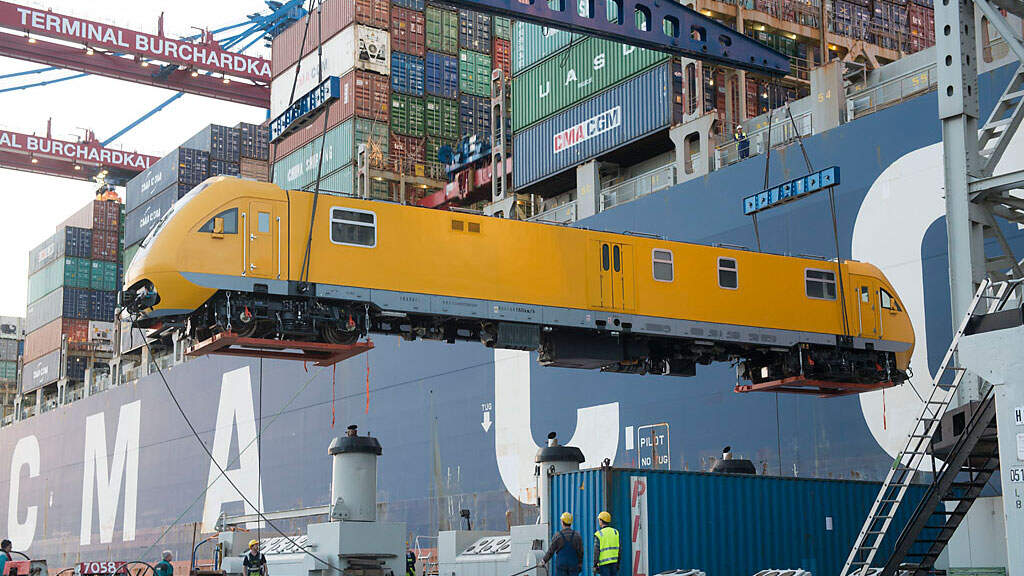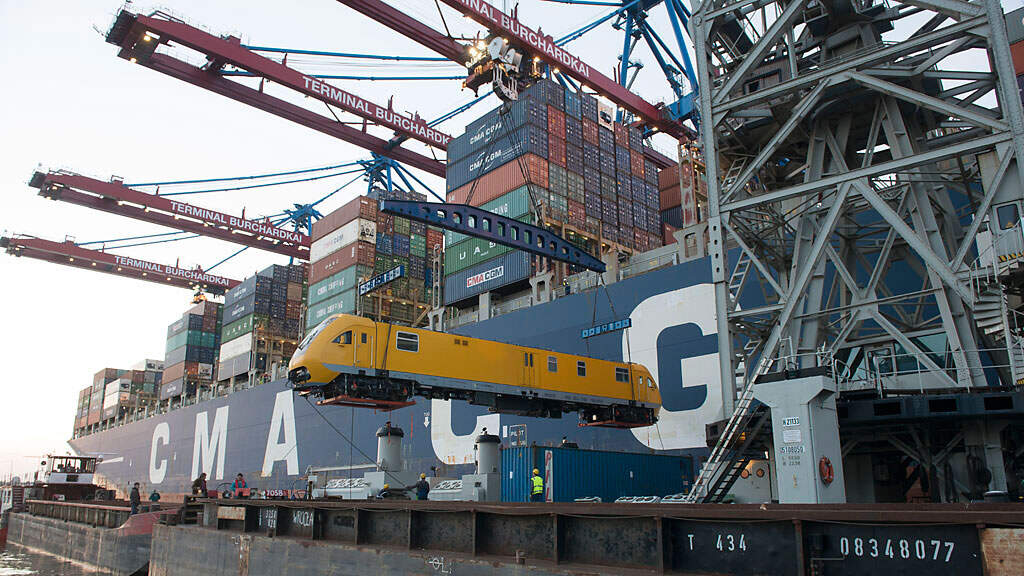Around the world
Manufactured by a German-Chinese consortium, completed near Berlin, tested in the Czech Republic, and finally deployed for public use in China: if a train locomotive goes on world tour, then it goes with DACHSER. Because logistical finesse and know-how are indispensable from project start to finish, regardless of the carrier needed—be it container ship, inland vessel, or flatbed trailer.

The floating crane in Hamburg Harbor tips to the side gently as the steel cable starts pulling and a 24-meter-long diesel locomotive gradually emerges from Loading Bay 58. From an engineering standpoint, there is nothing ordinary about the train locomotive being hoisted from the belly of the container ship CMA CGM Musca. “The proper designation is catenary maintenance vehicle,” explains Rainer Bardenberg of Gleisbaumechanik Brandenburg GmbH. The rail vehicle will one day repair defective catenary lines on China’s high-speed railroads. But before it reaches that point, a floating crane in Hamburg Harbor lifts up the locomotive and hauls it over to a barge. This is because the harbor’s stationary container bridges are not long and sturdy enough to lift 61 tons from the water’s edge. So Floating Crane No. 3 is sent to the rescue instead.
From inland waterway vessel to flatbed trailer
Aboard the barge on Germany’s inland waterways, it continues onward along the Elbe, though for the last 15 kilometers, a flatbed trailer hauls the freight until it reaches Gleisbaumechanik’s plant site. “Two additional vehicle bodies are on their way to Brandenburg via Antwerp,” reports Hans-Ulrich Brüggemann, Head of Sea Freight Projects at DACHSER Air & Sea Logistics Germany West, which organized and chaperoned the shipment.
Two additional vehicle bodies are on their way to Brandenburg via Antwerp
The vehicle bodies for future specialized vehicles, dubbed the “BR711-G” model, represent the product of a joint venture between GMB Gleisbaumechanik Brandenburg and Beijing Feb. 7th Railway Transportation Equipment Co. Ltd, based in China. After final assembly in Brandenburg, DACHSER ships the vehicle onward, across the 470 kilometer stretch to the Czech Republic, where it undergoes specialized testing.

Driving the locomotives for testing purposes
Situated east of Prague, the town of Velim is host to a railroad testing facility with a ring 13 kilometers in length. The vital organs inside the vehicle undergo stringent examination and exhaustive testing in trials that run up to 160 km/h—making it the fastest railway maintenance vehicle in the world. If a catenary line cracks or tears, then a BR711 model must get to the defect as fast as possible to remedy the condition. Since there is no power from the catenary in this situation, the yellow maintenance vehicles are equipped with a diesel motor. Once all tests are concluded and the corresponding certification issued, the three locomotives make their way to China. This time the journey is not covered by rail (due to the variation in railroad track gauges, which do not fit together between Germany and China), but instead by ship via the Hamburg Harbor again. For every special vehicle, Hans-Ulrich Brüggemann has to reserve the space for 24 standard containers (TEU) on the ship. He already optioned the dates for the floating crane (which soars 76 meters high) as well, thus ensuring the yellow giants get aboard the container ship and reach China without delay. At that point, the logistical World Tour of the locomotives is complete, so that—at last!—the three catenary maintenance vehicles can move on their own.